Weiqiang Ren
SAIL-Recon: Large SfM by Augmenting Scene Regression with Localization
Aug 25, 2025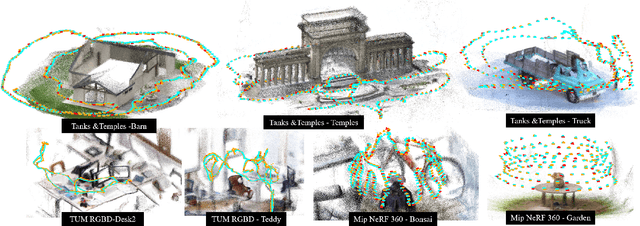
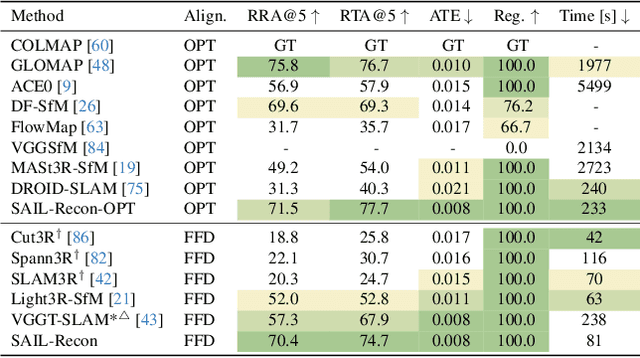
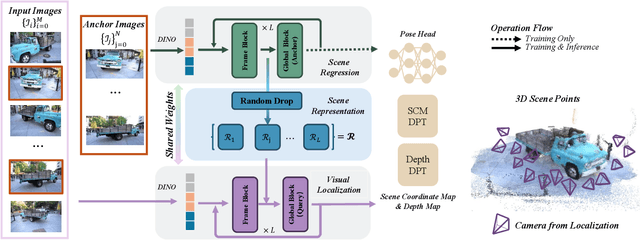

Abstract:Scene regression methods, such as VGGT, solve the Structure-from-Motion (SfM) problem by directly regressing camera poses and 3D scene structures from input images. They demonstrate impressive performance in handling images under extreme viewpoint changes. However, these methods struggle to handle a large number of input images. To address this problem, we introduce SAIL-Recon, a feed-forward Transformer for large scale SfM, by augmenting the scene regression network with visual localization capabilities. Specifically, our method first computes a neural scene representation from a subset of anchor images. The regression network is then fine-tuned to reconstruct all input images conditioned on this neural scene representation. Comprehensive experiments show that our method not only scales efficiently to large-scale scenes, but also achieves state-of-the-art results on both camera pose estimation and novel view synthesis benchmarks, including TUM-RGBD, CO3Dv2, and Tanks & Temples. We will publish our model and code. Code and models are publicly available at: https://hkust-sail.github.io/ sail-recon/.
Boost 3D Reconstruction using Diffusion-based Monocular Camera Calibration
Nov 26, 2024



Abstract:In this paper, we present DM-Calib, a diffusion-based approach for estimating pinhole camera intrinsic parameters from a single input image. Monocular camera calibration is essential for many 3D vision tasks. However, most existing methods depend on handcrafted assumptions or are constrained by limited training data, resulting in poor generalization across diverse real-world images. Recent advancements in stable diffusion models, trained on massive data, have shown the ability to generate high-quality images with varied characteristics. Emerging evidence indicates that these models implicitly capture the relationship between camera focal length and image content. Building on this insight, we explore how to leverage the powerful priors of diffusion models for monocular pinhole camera calibration. Specifically, we introduce a new image-based representation, termed Camera Image, which losslessly encodes the numerical camera intrinsics and integrates seamlessly with the diffusion framework. Using this representation, we reformulate the problem of estimating camera intrinsics as the generation of a dense Camera Image conditioned on an input image. By fine-tuning a stable diffusion model to generate a Camera Image from a single RGB input, we can extract camera intrinsics via a RANSAC operation. We further demonstrate that our monocular calibration method enhances performance across various 3D tasks, including zero-shot metric depth estimation, 3D metrology, pose estimation and sparse-view reconstruction. Extensive experiments on multiple public datasets show that our approach significantly outperforms baselines and provides broad benefits to 3D vision tasks. Code is available at https://github.com/JunyuanDeng/DM-Calib.
Focal and Efficient IOU Loss for Accurate Bounding Box Regression
Jan 20, 2021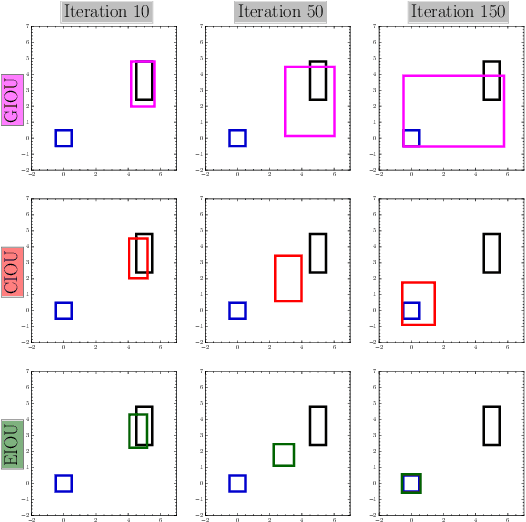

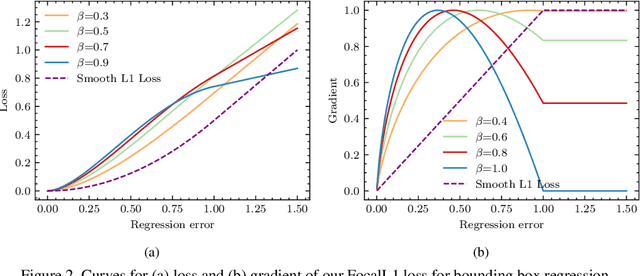
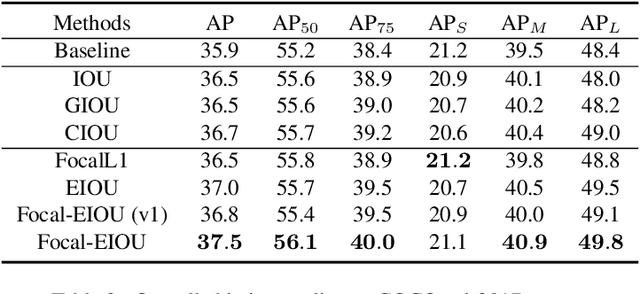
Abstract:In object detection, bounding box regression (BBR) is a crucial step that determines the object localization performance. However, we find that most previous loss functions for BBR have two main drawbacks: (i) Both $\ell_n$-norm and IOU-based loss functions are inefficient to depict the objective of BBR, which leads to slow convergence and inaccurate regression results. (ii) Most of the loss functions ignore the imbalance problem in BBR that the large number of anchor boxes which have small overlaps with the target boxes contribute most to the optimization of BBR. To mitigate the adverse effects caused thereby, we perform thorough studies to exploit the potential of BBR losses in this paper. Firstly, an Efficient Intersection over Union (EIOU) loss is proposed, which explicitly measures the discrepancies of three geometric factors in BBR, i.e., the overlap area, the central point and the side length. After that, we state the Effective Example Mining (EEM) problem and propose a regression version of focal loss to make the regression process focus on high-quality anchor boxes. Finally, the above two parts are combined to obtain a new loss function, namely Focal-EIOU loss. Extensive experiments on both synthetic and real datasets are performed. Notable superiorities on both the convergence speed and the localization accuracy can be achieved over other BBR losses.
High-level Semantic Feature Detection: A New Perspective for Pedestrian Detection
Apr 23, 2019
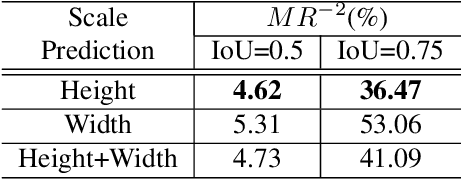

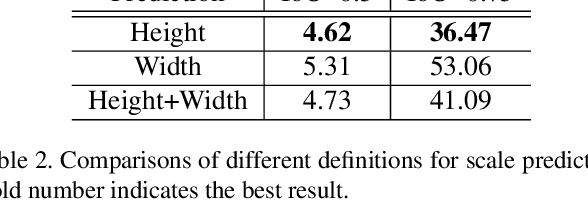
Abstract:Object detection generally requires sliding-window classifiers in tradition or anchor-based predictions in modern deep learning approaches. However, either of these approaches requires tedious configurations in windows or anchors. In this paper, taking pedestrian detection as an example, we provide a new perspective where detecting objects is motivated as a high-level semantic feature detection task. Like edges, corners, blobs and other feature detectors, the proposed detector scans for feature points all over the image, for which the convolution is naturally suited. However, unlike these traditional low-level features, the proposed detector goes for a higher-level abstraction, that is, we are looking for central points where there are pedestrians, and modern deep models are already capable of such a high-level semantic abstraction. Besides, like blob detection, we also predict the scales of the pedestrian points, which is also a straightforward convolution. Therefore, in this paper, pedestrian detection is simplified as a straightforward center and scale prediction task through convolutions. This way, the proposed method enjoys an anchor-free setting. Though structurally simple, it presents competitive accuracy and good speed on challenging pedestrian detection benchmarks, and hence leading to a new attractive pedestrian detector. Code and models will be available at \url{https://github.com/liuwei16/CSP}.
LaneNet: Real-Time Lane Detection Networks for Autonomous Driving
Jul 04, 2018



Abstract:Lane detection is to detect lanes on the road and provide the accurate location and shape of each lane. It severs as one of the key techniques to enable modern assisted and autonomous driving systems. However, several unique properties of lanes challenge the detection methods. The lack of distinctive features makes lane detection algorithms tend to be confused by other objects with similar local appearance. Moreover, the inconsistent number of lanes on a road as well as diverse lane line patterns, e.g. solid, broken, single, double, merging, and splitting lines further hamper the performance. In this paper, we propose a deep neural network based method, named LaneNet, to break down the lane detection into two stages: lane edge proposal and lane line localization. Stage one uses a lane edge proposal network for pixel-wise lane edge classification, and the lane line localization network in stage two then detects lane lines based on lane edge proposals. Please note that the goal of our LaneNet is built to detect lane line only, which introduces more difficulties on suppressing the false detections on the similar lane marks on the road like arrows and characters. Despite all the difficulties, our lane detection is shown to be robust to both highway and urban road scenarios method without relying on any assumptions on the lane number or the lane line patterns. The high running speed and low computational cost endow our LaneNet the capability of being deployed on vehicle-based systems. Experiments validate that our LaneNet consistently delivers outstanding performances on real world traffic scenarios.
 Add to Chrome
Add to Chrome Add to Firefox
Add to Firefox Add to Edge
Add to Edge